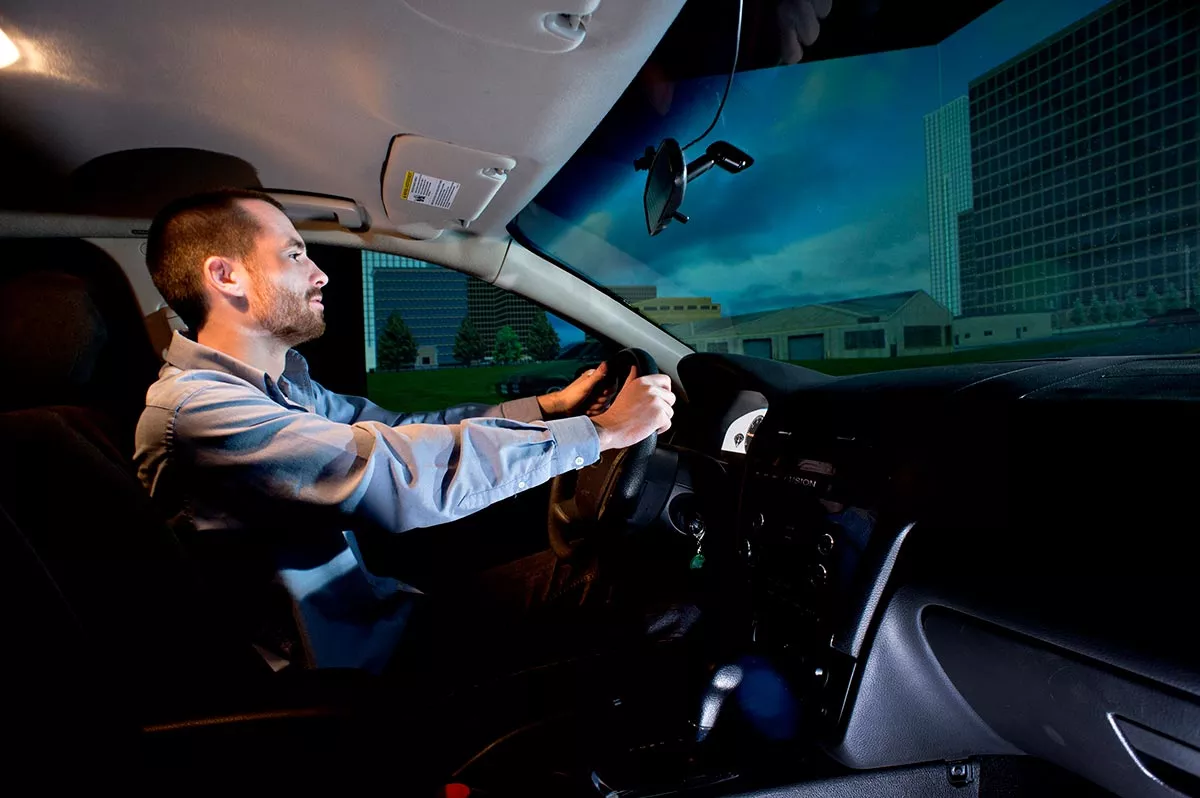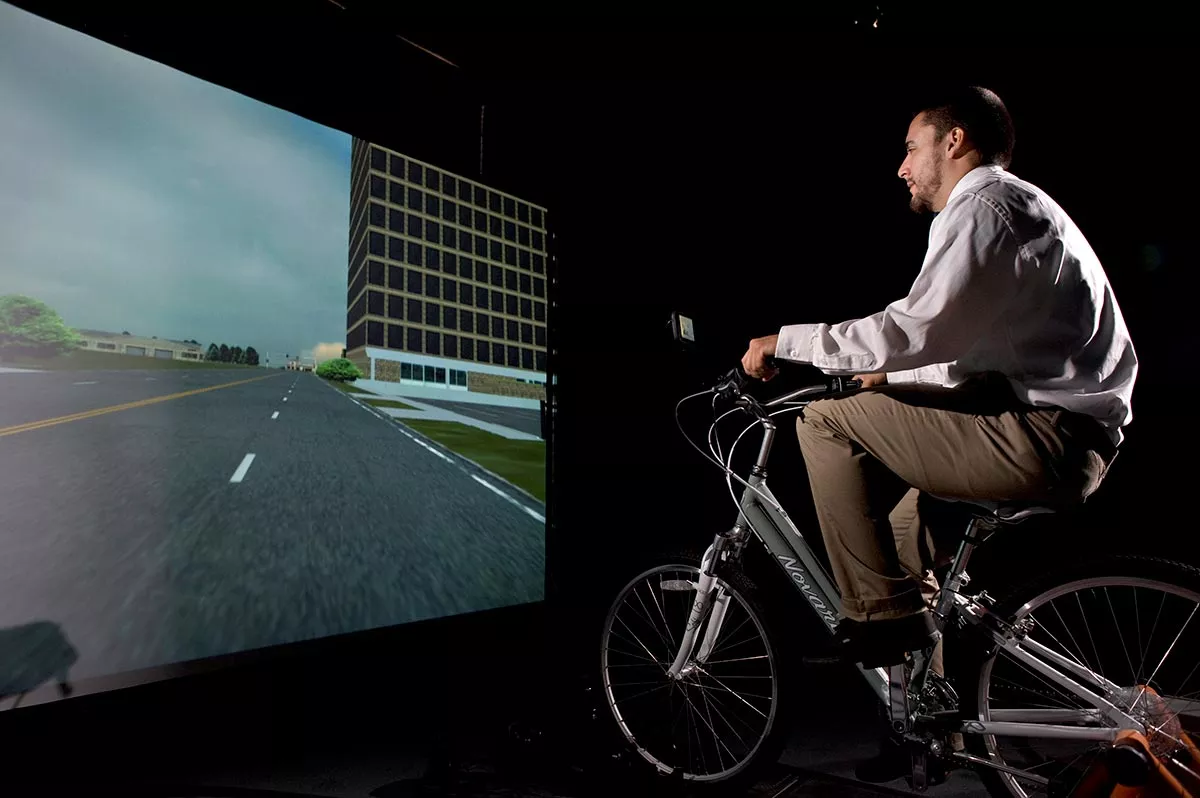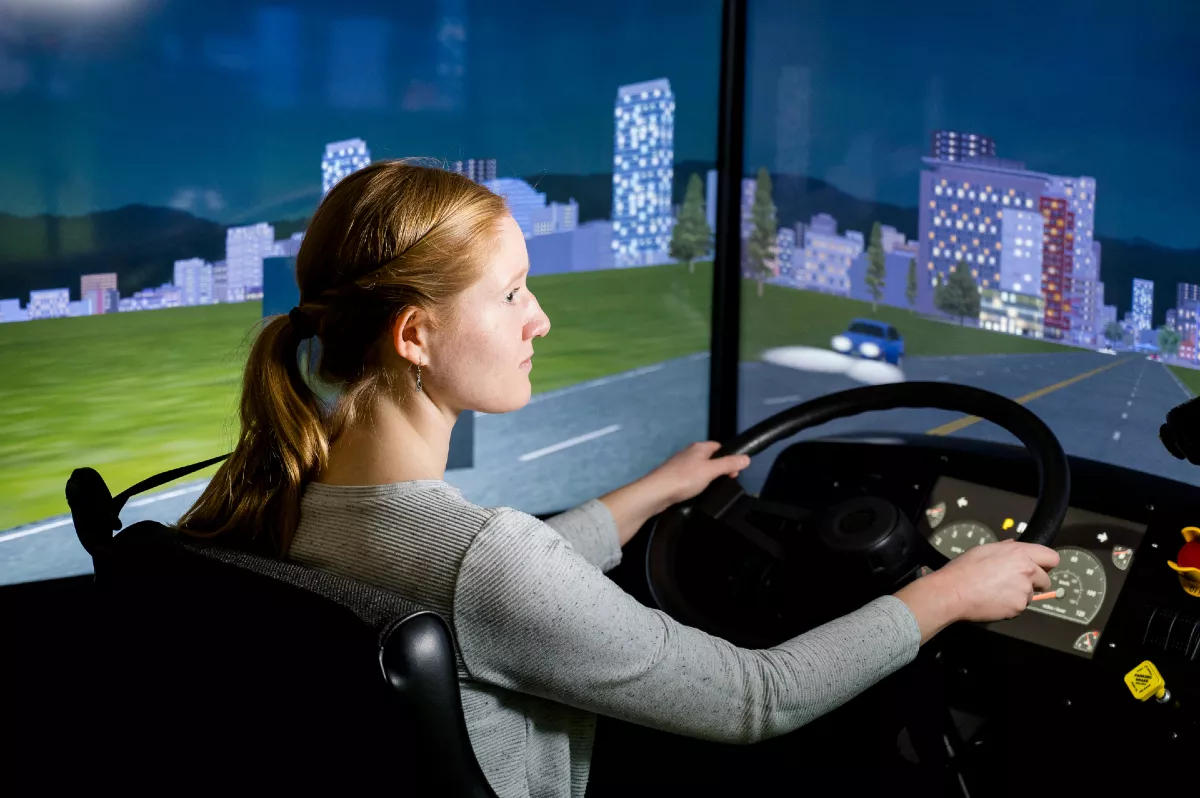Researchers affiliated with the laboratory are concerned with studying transportation operations and safety issues from a multi-modal perspective. The high fidelity simulators allow researchers to evaluate many more scenarios that would be practically possible in other experimental mediums while simultaneously controlling for extraneous variables. As a result, drivers and bicyclists can be exposed to risky scenarios that would be either very difficult or impossible to evaluate in the real world.
Driving and Bicycling Simulator
Research
Facilities
Faculty Researchers
Fee Schedule
Location
3550 SW Jefferson Way, Corvallis, Oregon 97331
Passenger Car Driving Simulator
The OSU Passenger Car Driving Simulator (Realtime technologies RDS-2000) is a high-fidelity simulator, consisting of a full 2009 Ford Fusion cab mounted on top of a pitch motion system. Three projectors produce a 180-degree front view and a fourth projector displays a rear image for the driver’s center mirror. The two side mirrors have LCD displays as does the instrument panel. The passenger car cab instruments are fully functional and include a steering control loading system to accurately represent steering torques based on vehicle speed and steering angle. Our simulator operates with SimDriver and SimADAS, meaning that the vehicle can function at varying levels of automation, promoting the study of automated systems in a passenger car cab. The Passenger Car Driving Simulator is networked with our Heavy Vehicle Driving and Bicycling Simulators so that networked simulation studies can be conducted with all three or any two simulators in the same virtual environment.

Bicycling Simulator
The OSU Bicycling Simulator (Realtime technologies Research Bike Simulator) is one of only a handful of bicycle simulators in the world. Braking, pedaling, and steering inputs from the cyclist are reflected in the visual field. To increase the demographic variety of subjects, three different bicycles (men’s, women’s, and a smaller child size) have been instrumented and can be easily swapped on the adjustable platform. The Bicycling Simulator is networked with our Passenger Car and Heavy Vehicle Driving Simulators so that networked simulation studies can be conducted with all three or any two simulators in the same virtual environment.

Heavy Vehicle Driving Simulator
In Memory of Neil Nightingale, 1976-2016
The OSU Heavy Vehicle Driving Simulator (FAAC/Realtime Technologies TT-1000) is designed to give operators an authentic driving experience. Multiple high-definition displays give an expansive, geometrically correct +210º field-of-view with adjustable inset mirrors. The cab is generic, approximating many Heavy Vehicle makes and models. Our simulator operates with SimDriver and SimADAS, meaning that the vehicle can function at varying levels of automation, promoting the study of automated systems in a heavy vehicle cab. The Heavy Vehicle Driving Simulator is networked with our Passenger Car Driving and Bicycling simulators so that networked simulation studies can be conducted with all three or any two simulators in the same virtual environment.

Desktop Development Simulator
The OSU Desktop Development Simulator (Realtime Technologies’ RDS-100) is used to build and test experimental designs and scenarios for both the passenger car driving simulator and bicycling simulator. The multimonitor platform of the desktop development simulator, with the incorporated steering wheel and floor pedals, is useful for creating, coding, and testing developed scenes. This desktop development simulator allows for quick troubleshooting during environment development. Additionally, the desktop simulator can be used to conduct a variety of research studies.
